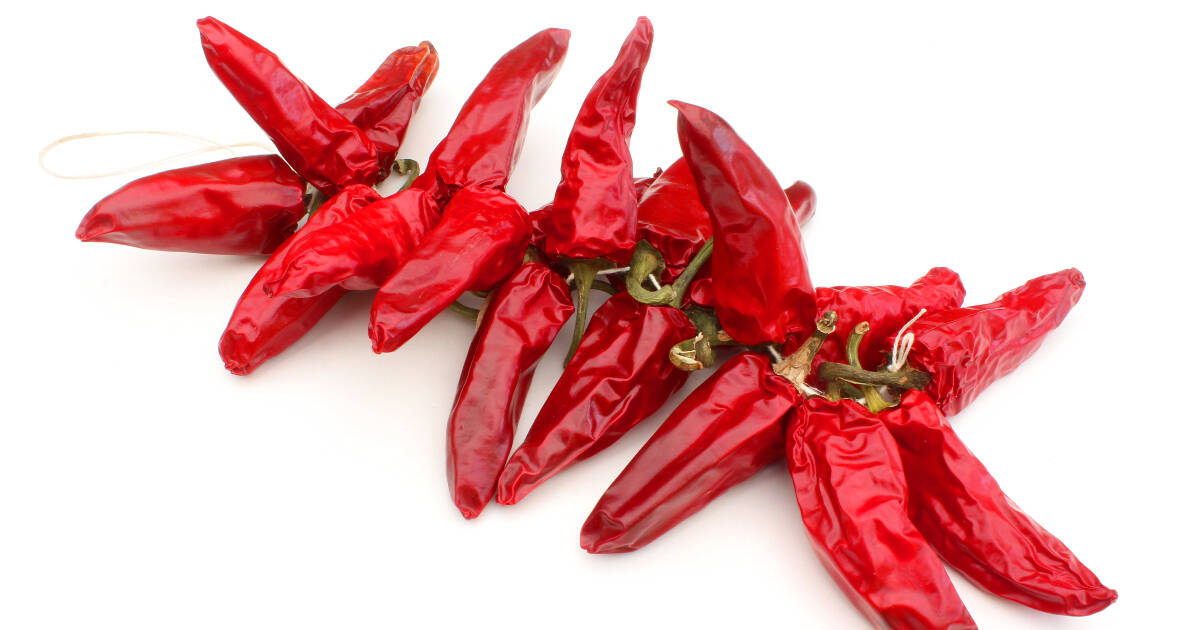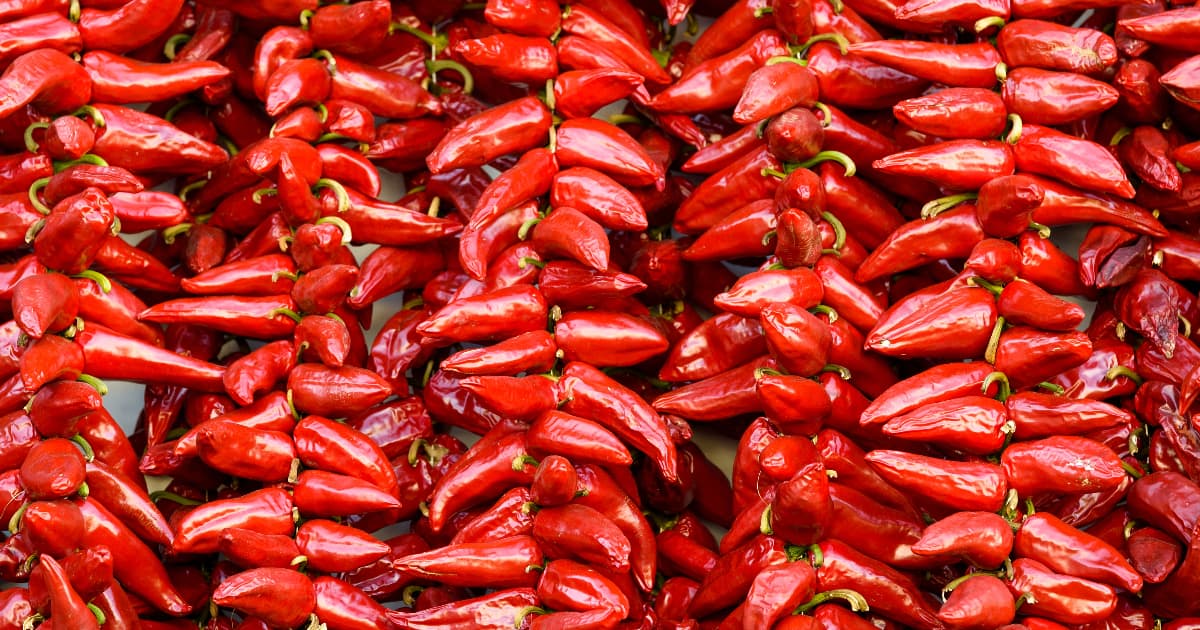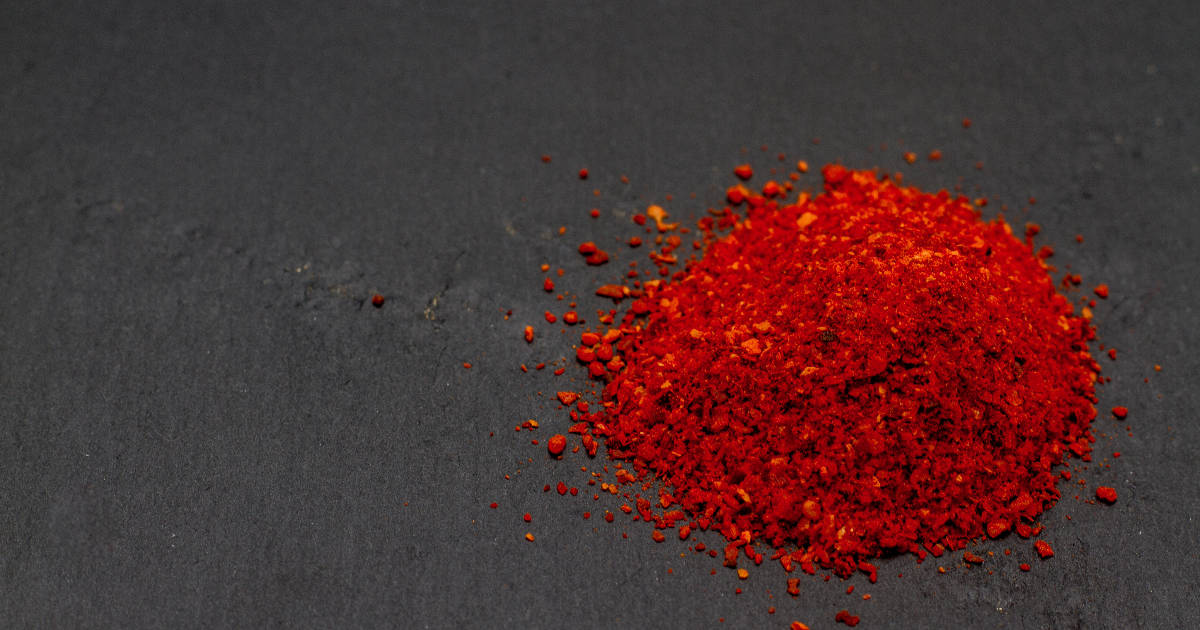Espelette pepper powder, also known as piment d'Espelette in French, is a type of chili pepper that originates from and is traditionally grown in the French Basque Country. This delicate pepper has a fruity, mildly spicy flavor and a deep red color.

Espelette pepper powder is made by drying and grinding Espelette chili peppers. It can add color and gentle heat to many savory dishes. Let’s explore the history, flavor, uses, and availability of this beloved Basque ingredient.
A Protected French Pepper

The Espelette chili pepper is a variety of the species Capsicum annuum that was introduced to France from the New World in the 16th century. It is cultivated in the commune of Espelette and surrounding towns in the French department of Pyrénées-Atlantiques.
This pepper is so tied to the culture and cuisine of France’s Basque region that it has legal protection regarding its name and production. In 2000, Espelette pepper gained AOC status, meaning it is an Appellation d’Origine Contrôlée product. This controlled designation of origin ensures that authentic Espelette pepper comes only from approved communes in southwest France.
The soils, climate, and traditional growing methods of the Basque Country impart a unique flavor to Espelette chili peppers. Like wine, the terroir matters for this spice!
Mild Yet Complex Flavor Profile
On the Scoville scale of pepper heat, Espelette pepper ranks moderately, with a maximum of about 4,000 Scoville Heat Units. This makes it milder than peppers like jalapeño or serrano, but slightly hotter than poblano or ancho chilies. The heat is gentle, not overpowering.
Beyond a little kick, Espelette pepper delivers subtle, complex flavors. It has been described as fruity, fresh, smoky, and even nutty. The dried powder form intensifies the natural sweetness and smokiness.
This nuanced taste and mild bite make Espelette an excellent seasoning. It brings more interest than regular black pepper without setting your mouth on fire.
Traditional and Modern Uses
The Basque people integrated Espelette pepper into their regional cuisine soon after its introduction. It became a staple seasoning, favored over black pepper for its distinctive aroma and color.
In traditional Basque cooking, Espelette pepper season meats like ham and sausages, stews like piperade, and condiments like spicy mayonnaise. It also enhances classics like croquettes and omelets.
Today, innovative chefs use Espelette powder beyond just local Basque dishes. Its sweet peppery taste complements all kinds of seafood, poultry, pork, lamb, and vegetables. Sprinkle it over finished pasta, risotto, soups, eggs, potatoes, and more for a pop of color and flavor. Mix it into dry rubs and marinades. Espelette pepper even deliciously enhances chocolate!
How to Buy Espelette Pepper Powder

Within France, you can find fresh or dried Espelette peppers, powders, purées, and more from local producers. International availability is more limited.
Look for Espelette pepper powder imported from France at specialty food stores or order it online. Be aware that pepper grown in California may be sold under the Espelette name, though it lacks AOC status. For authentic, protected Espelette, look for the AOC designation on the product packaging.
When shopping for Espelette powder, prioritize quality over cost. Higher-priced spices are often more freshly harvested and processed. Pre-ground pepper loses aroma over time, so whole dried peppers you grind yourself offer the most vibrant flavor.
A Treasured Basque Ingredient
Espelette pepper powder adds mild heat and subtly sweet, fruity flavors to foods. This specialty of France’s Basque Country has earned prestige and protection. Seek authentic AOC-labeled Espelette powder to enjoy the full experience of this unique chili pepper. A little goes a long way in seasoning savory dishes.
FAQ
How is espelette pepper celebrated in France?
Every October, the village of Espelette hosts a Pepper Festival called La Fête du Piment. This weekend's celebration includes Basque music, dancing, sports, and of course cuisine featuring espelette peppers. It honors the fall pepper harvest and draws crowds of locals and tourists alike.
What are some recipe ideas using espelette powder?
Try shaking a pinch of espelette powder over grilled meats like chicken, steak, lamb chops, or salmon. Mix it into a dry rub for pork ribs. Blend it into a compound butter to top bread, seafood, or vegetables. Add it to vinaigrettes, creamy sauces, dips, and more. Espelette powder brings warmth and color to nearly any dish!
Is espelette pepper the same as another spice called pimentón?
While espelette and pimentón are both paprika-like red pepper powders, they come from different varieties of peppers grown in different regions. Pimentón is Spanish paprika made from ground dried chilies. The smoky Spanish pimentón de la Vera has some similar nutty, sweet notes as espelette powder.
Conclusion
With its protected AOC status and deeply rooted role in Basque culinary tradition, Espelette pepper powder stands apart from the many ground chili peppers of the world.
Its mildly spicy, fruity taste and appetizing red hue make Espelette a unique seasoning.
A pinch of precious powder transports any dish to the flavors of France’s picturesque Basque Country.

